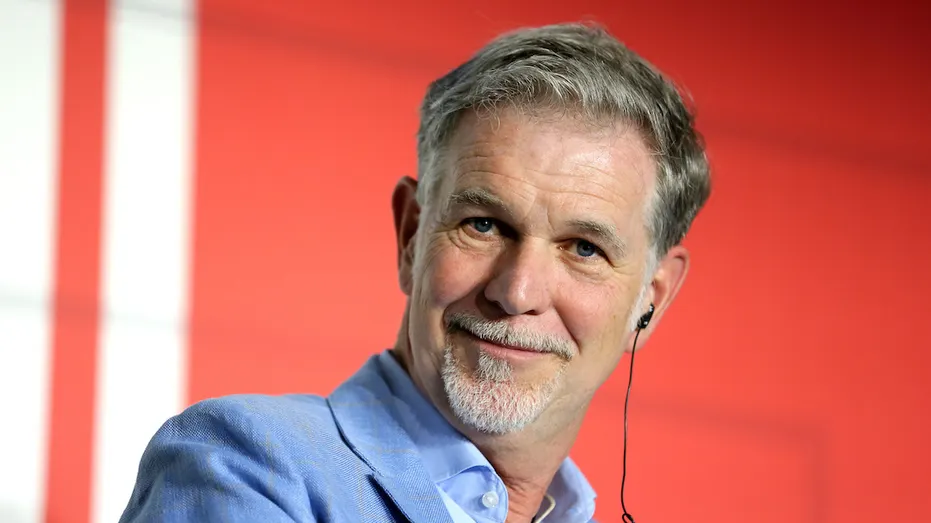
Reed Hastings is an American entrepreneur known as the co-founder and CEO of Netflix, a subscription-based media-service provider streaming over-the-top media which offers online streaming of a library of films and television programs, including those produced in-house.
Early Life and Education
Wilmot Reed Hastings Jr. was born on October 8, 1960, in Boston, Massachusetts; the son of Wilmot Reed Hastings and Joan Amory (Loomis). His maternal great-grandfather was an attorney, scientist, financier, inventor and philanthropist, Alfred Lee Loomis. He has two children with wife, Patricia Ann Quillin. He is a philanthropist and an American entrepreneur.
He studied in Buckingham Browne & Nichols School in Cambridge, Massachusetts. He joined Marine Corps officer training through their Platoon Leader Class. In 1981, he spent his summer in Officer Candidate School at Marine Corps Base Quantico. He did not finish his training and never commissioned into the Marine Corps, but instead, he chose to pursue service in the Peace Corps.
Out of a combination of adventure and service, Hastings joined the Peace Corps after graduating from Bowdoin College. From 1983 to 1985, he went to teach math in high school in Swaziland. He went on to attend Stanford University after returning from the Peace Corps. In 1988, he graduated with a Master’s Degree in Computer Science.
Pure Software
Hastings’ first occupation was at Adaptive Technology, where he invented a tool for debugging software. In 1990, he met Audrey Maclean, a CEO at Adaptive Corp. Hastings left the company in 1991 to start his first company, Pure Software, which produced products to troubleshoot software.
The rapidly developing company soon proved challenging for Hastings as he lacked in managerial experience. He mentioned that he had trouble supervising with rapid headcount growth. His background in engineering didn’t prepare him for the challenges of being a CEO. Hastings even asked his board to replace him, stating he was losing self-confidence. The board refused, and Hastings soon learned to be a businessman. In 1995, Pure Software was taken public by Morgan Stanley.
In 1996, the company declared the union with Atria Software. His aim in this unification was to combine the two companies’ sales forces. According to the Wall Street Journal’s report, the merged companies were experiencing difficulties in integrating the sales forces after the head salesmen of both companies left following the merger. In 1997, the combined companies were obtained by Rational Software, which caused a 42% drop in both companies’ stocks after the deal was declared.
Hastings was assigned as Chief Technical Officer of the combined companies and left soon after the acquisition. After his first company, Hastings spent two years contemplating about how to prevent similar problems for his next venture.
Netflix
In 1997, Hastings co-founded Netflix with Marc Randolph, offering a flat rate movie rental-by-mail to consumers in the US by joining two developing technologies; DVDs, which were easier to send as mail and an online website to order them from. Situated in Los Gatos, California, Netflix has gathered a collection of 100,000 titles and over 100 million subscribers. He had the idea for Netflix after his company was acquired.
Netflix Culture
The company is well-known for its advanced management practices. It is also known to pay their employees much higher salaries than customary to attract the best talent, and one of the few companies, where employees can choose annually how much of their reimbursement they want in cash versus stock. Other innovations include their way of dealing with their employees who don’t meet their expectancies. At most companies, average operators only get an average raise, but at Netflix, they still get a generous compensation package. His company also has gotten notoriety for disregarding vacation and sick time for employees, and instead, letting them cope this time off personally.
Hastings would meet each of his new employees and converse the theories and culture about it. Over the years, his personal presentation was codified into a PowerPoint that was extensively distributed internally, tweaked and reviewed by the upper management, and enhanced actively. Hastings published this internal culture guide publicly online in August 2009. It laid out his strongly held principles about the administration and workers. This guide became a pre-employment screening tool that dissuaded incompatible people from applying. The deck had been viewed more than 10.5 million times, as of January 2015.
Hastings is an advocate of Internet television and perceives it as the future. He credits YouTube for his shift in tactic for emerging a video streaming service.